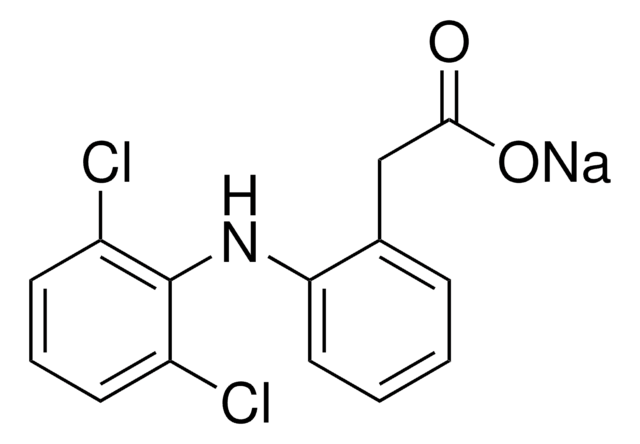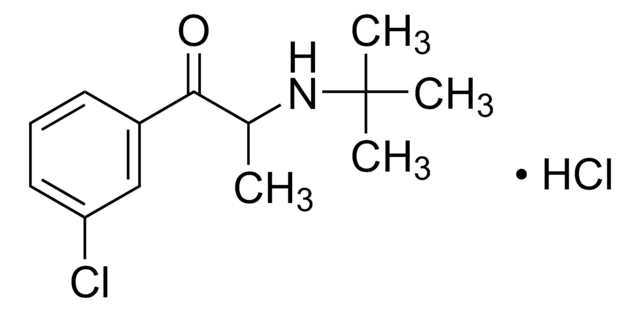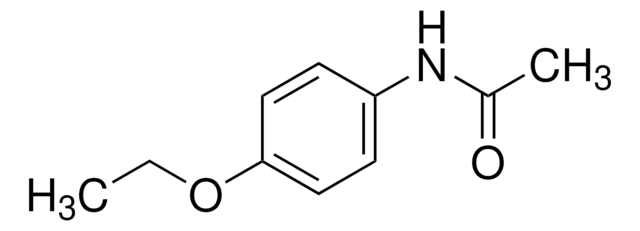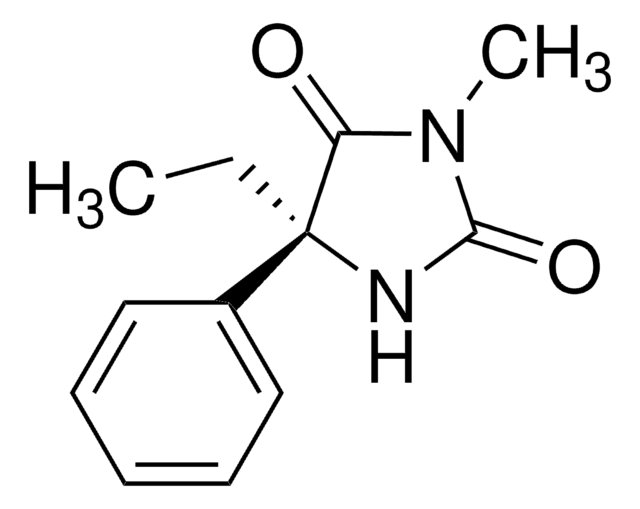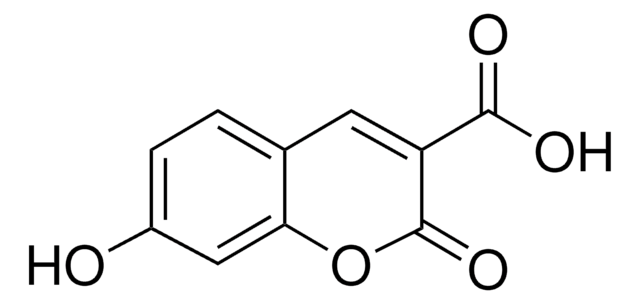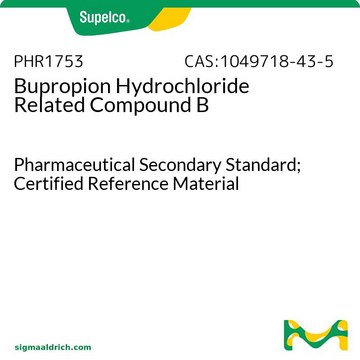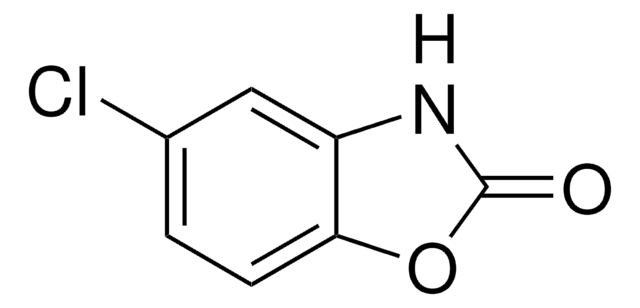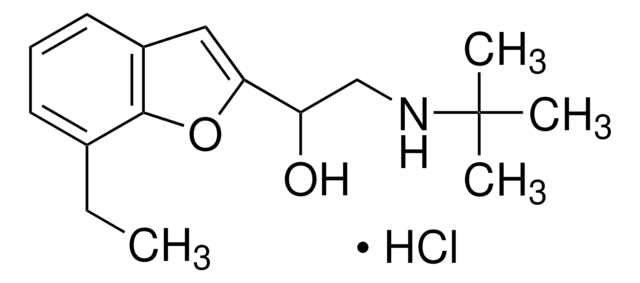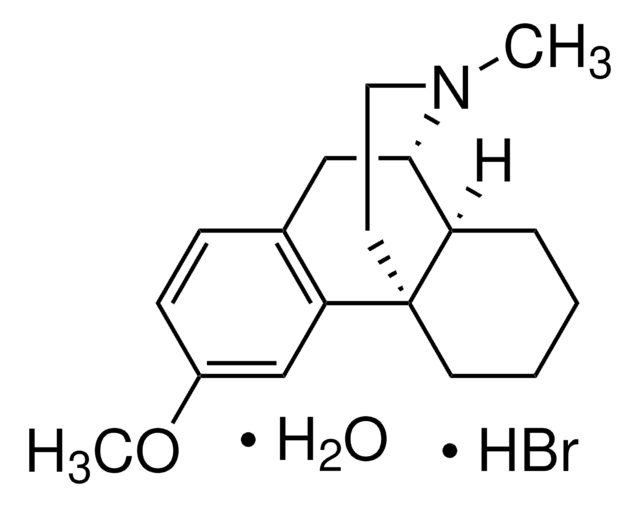B102
Bupropion hydrochloride
≥98% (HPLC), solid, dopamine and norepinephrine transporter inhibitor
Synonym(s):
(±)-1-(3-Chlorophenyl)-2-[(1,1-dimethylethyl)amino]-1-propanone hydrochloride
About This Item
Recommended Products
Product Name
Bupropion hydrochloride, ≥98% (HPLC), solid
Quality Level
Assay
≥98% (HPLC)
form
solid
color
white
solubility
H2O: 15 mg/mL, clear
originator
GlaxoSmithKline
SMILES string
Cl[H].CC(NC(C)(C)C)C(=O)c1cccc(Cl)c1
InChI
1S/C13H18ClNO.ClH/c1-9(15-13(2,3)4)12(16)10-6-5-7-11(14)8-10;/h5-9,15H,1-4H3;1H
InChI key
HEYVINCGKDONRU-UHFFFAOYSA-N
Gene Information
human ... DRD1(1812) , DRD2(1813) , DRD3(1814) , DRD4(1815) , DRD5(1816) , SLC6A2(6530) , SLC6A3(6531)
Looking for similar products? Visit Product Comparison Guide
General description
Application
Biochem/physiol Actions
Features and Benefits
Signal Word
Warning
Hazard Statements
Hazard Classifications
Acute Tox. 4 Oral
Storage Class Code
11 - Combustible Solids
WGK
WGK 3
Flash Point(F)
Not applicable
Flash Point(C)
Not applicable
Personal Protective Equipment
Choose from one of the most recent versions:
Already Own This Product?
Find documentation for the products that you have recently purchased in the Document Library.
Customers Also Viewed
Related Content
Discover Bioactive Small Molecules for ADME/Tox
DISCOVER Bioactive Small Molecules for Neuroscience
Our team of scientists has experience in all areas of research including Life Science, Material Science, Chemical Synthesis, Chromatography, Analytical and many others.
Contact Technical Service